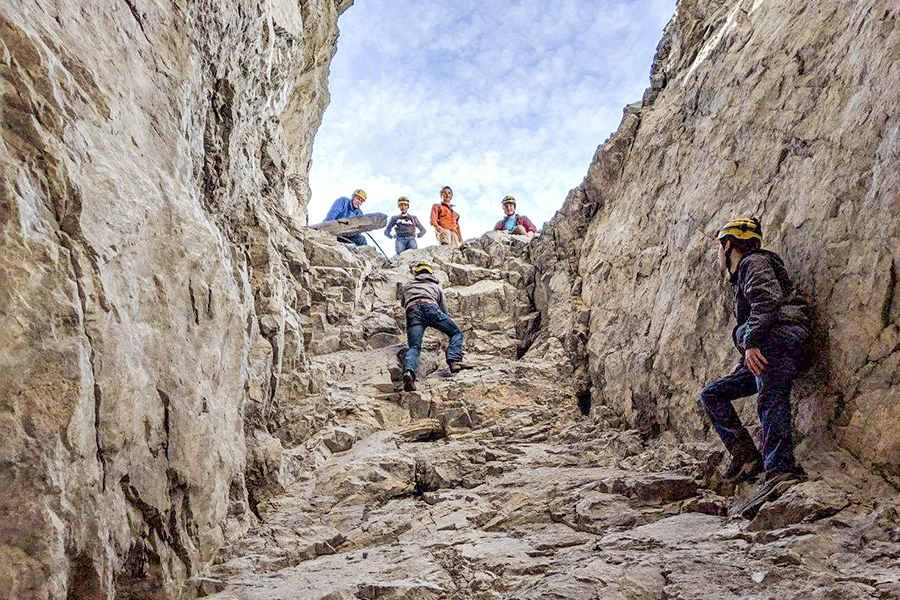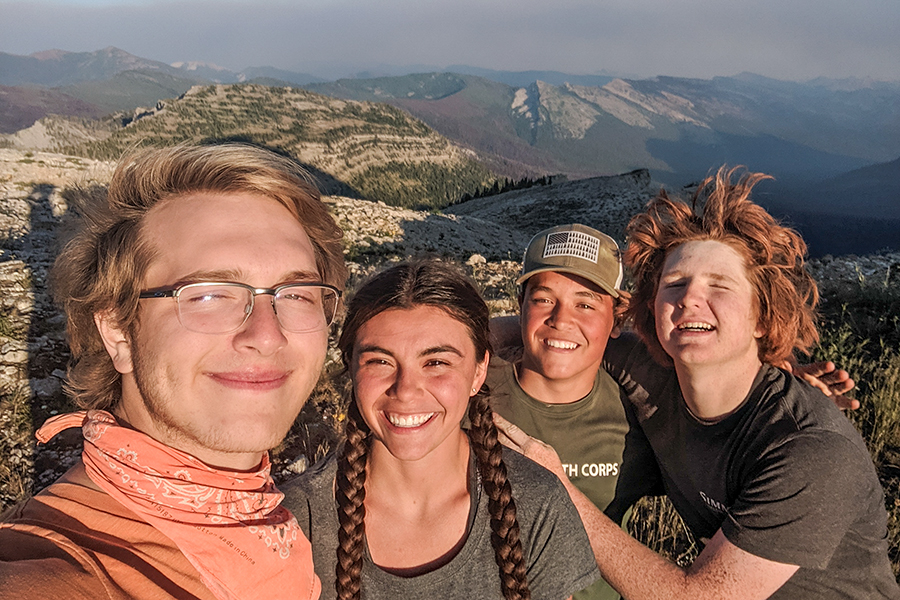Bigfork High Students Receive President’s Environmental Youth Award
Members of the school’s cave club have explored caves and collected valuable scientific data for land managers and agencies since 2005
By Myers Reece
Rare is the opportunity for high school students to venture into wilderness caves and collect data that make meaningful contributions to scientific research and natural resource management.
Even rarer is national recognition from the federal government for that work.
Students in the Bigfork High School Cave Club can check both of those boxes following a late-April announcement by the Environmental Protection Agency (EPA) giving club members the President’s Environmental Youth Award. It’s the second time the cave club has received the award, the first coming in 2010 in recognition of cave conservation work in Glacier National Park.
The award named Bigfork’s Colten Wroble and Ryan Cantrell, making them two of only 35 students to receive the award from the EPA and President’s Council on Environmental Quality for “outstanding environmental projects by K-12 youth.”
Wroble and Cantrell were honored for developing a web-based system that uses citizen science to collect information on bat populations in caves across Montana to “help land managers and agencies better understand and evaluate future, expected impacts of White Nose Syndrome,” according to the EPA. Cavers can gather and upload data while visiting caves on the website that Wroble and Cantrell created, eBatsMT, which uses applications from ArcGIS online.
“In addition to collecting valuable data, the website serves as a forum connecting cavers and cave managers, and is encouraging cave stewardship and bat conservation across the state,” the EPA stated.
Cantrell noted that cave visitors and explorers who collect and upload data can make a significant impact in better understanding bats and caves in Montana.
“Most agencies can’t afford to pay people to go into caves,” he said. “By doing this, we’re able to get this information that without them we wouldn’t be able to get.”
“While people are in the caves we promote being respectful,” he added, “making sure they’re not stepping in mud or on formations, because we want to preserve these caves while we get this information.”
Although only Wroble, a sophomore, and Cantrell, a graduating senior, were named on the award, Hans Bodenhamer, an earth science teacher at Bigfork High School who formed the club in 2005, noted the wide-ranging contributions that other members of the club have made to scientific research and natural resource management.

Over the last 15 years, students who participate in the cave club have become versed in the principles of scientific research and geographic information system (GIS), while applying that knowledge to real-world applications, which has led to a number of grants from state and federal agencies.
Through its “resource monitoring,” the club logs observations, photos and data regarding cave formations and conditions, mineral deposits, climate, organisms including bats and more. The students use GIS to organize and analyze the data, and have created detailed maps for a number of caves in the state and conducted microinvertebrate population studies in others.
Cave members get to spelunk in far corners of the wilderness, while hiking many miles and driving many more, all of which allows them to explore the state’s textured wild landscape, including parts of it that few people ever see.
Roree “Scout” Jessop, a graduating senior, said she joined the club in part to overcome her fears. She remembers her first club trip, waking up at 3:30 a.m. and driving for hours to reach the destination.
“When I got into the cave and saw how special it was, and to be a part of this and help out the Forest Service, I didn’t want to stop,” Jessop said.
Similarly, Wroble said his first cave trip showed him a “whole part of being in the outdoors that I hadn’t experienced before.” Benjamin Keller, a graduating senior, was likewise hooked after his initial forays with the club.
“There’s no other club like it probably in the whole nation,” Keller said.
The EPA typically flies awardees to Washington D.C., which won’t happen this year due to the pandemic. But Bodenhamer has contacted some of the club’s partners and is planning an event in Helena, tentatively scheduled for July 7. Among the longtime cave club partners he anticipates to be represented at the event are Montana Fish, Wildlife and Parks, the U.S. Forest Service and the Montana Natural Heritage Program.
The EPA announced the award recipients on Earth Day.
“I want to congratulate our friends at the Bigfork High School Cave Club for translating and a passion for conservation and the outdoors into scientific data and research that are making a difference,” EPA Regional Administrator Gregory Sopkin said. “These Montana students reflect the spirit of Earth Day and exemplify what applied environmental education is all about.”